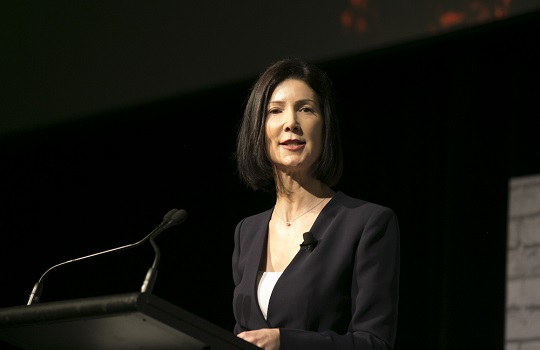
Collaboration, not competition, between humans and artificial intelligence (AI) technologies will usher in the next wave of economic growth and prosperity, and drive an exponential increase in workforce efficiency, according to Jayne Opperman, Westpac’s GM business integration, group technology.
Speaking at the FST 2017 Future of Financial Services conference in Sydney, Opperman tempered longstanding concerns over a ‘rise of the machines’-style takeover by smart computers, believing a wholesale replacement of human employees with AI-backed machines would not only prove undesirable but also unfeasible.
A “superhuman partnership” between machines and humans, Opperman stressed, would deliver a far better outcome than either party performing alone.
Opperman also challenged the doomsayers’ worst-case predictions of a “cold dystopian future” dominated by hyper-intelligent machines, believing such partnerships could empower, rather than hinder, humans’ decision-making capabilities.
“The digital revolution we’re part of today… is an age of human empowerment. It’s about us designing technology that puts us firmly in control of our own fate.”
“We the need the help of new intelligent machines to turn our grandest dreams into reality,” she said. “If we fail, it’s not because our machines are too intelligent, or not enough – it’s because we grew complacent in our ambition.”
The financial services industry is already proving a key beneficiary of AI-backed technologies, Opperman argued, with substantial benefits from automation yet to be realised.
“Already, financial services is adopting AI to drive better insights, support for a more intuitive customer experience, and better investment advice for our customers.”
Among the financial services industries most likely to benefit from wide-scale AI adoption, Opperman believes data-intensive and customer-oriented businesses, including auditing firms and real estate agents, are likely to top the list.
“We might see audit firms use AI to help spot non-standard behaviour patterns in financial transactions or to sift through and analyse pages of tax returns,” she said.
What is more, the introduction of new fiduciary rules could also impel financial services to rapidly embrace low-cost robo advice tools and encourage the creation of powerful machine-human hybrid workforces. “It’s an area where the blend of robo advice and human delivery can provide a really powerful combination,” Opperman said.
“The growth of cognitive computing power is providing access to a new robotic workforce to help us achieve significant performance improvement and drive better outcomes for customers,” she said.
From omni-channel to channel-less interactions
While employees face the prospect of sharing their workspaces with machines, it is customers who will most likely be talking to them.
Opperman believes customer interaction models are facing a radical shake-up from AI technologies, shifting the onus of communication, and even decision-making, from customers back to banks.
AI could, it is reckoned, fundamentally reshape financial services customer interaction model, shifting from an existing ‘Do-It-Your-Self’ approach to an AI-dominated ‘Do-It-For-Me’ model, whereby machines anticipate the demands of customers and proactively turn their information into action.
“In this Do-It-For-Me model, customers don’t have to bother about unessential information,” Opperman said, “they benefit from the end result.”
This AI-enriched customer service environment would effectively negate the complex web of interaction channels (from web-based portals and mobile to in-branch service networks) that have built up around today’s tech-savvy banking customers. The advancement of voice control, touch, and AI-backed technologies will ultimately drive this change, Opperman said.
“This move from omnichannel to channel-less, where we take away the concept of a channel and let AI help ‘de-complexify’ that for customers.
“If we deploy AI well across our company interfaces, then customers no longer need to understand complicated technology to use it. They can simply talk to it, gesture at it, or touch the AI that controls it,” she said.
While Opperman agreed AI “still has a lot of maturing to do” before organisations can rely on its accuracy, she maintains that AI-enabled systems are already delivering “faster turnaround times, fewer errors, and more personalised products and services” with the financial services industry.
Indeed, while AI is expected to gradually replace some human functions, she concedes it will take some time to overcome the “persistent challenges of bias, privacy, trust, lack of trained staff and regulatory change.”
As such, augmented intelligence technologies, or intelligence amplification – in which machines assist humans in enhancing cognitive functions – are likely to be the necessary stepping stone to a fully fledged AI capability.
Westpac’s road to AI
Westpac has already secured partnerships with AI and data-driven fintechs, including DataRepublic and Hyper Anna, an AI empowered data analyst, Opperman confirmed.
“We’re trialling a number of ways to provide unique experiences for our customers. We’ve analysed product performance data to improve the value we offer to institutional and business bank customers. We’ve looked at patterns in our customer contact data, just so we can optimise how we engage with customers and understand their preferred channels and times – whether that’s digital, branches or contact centres – and we pick up on signals to purchase so we can provide the right offers.





